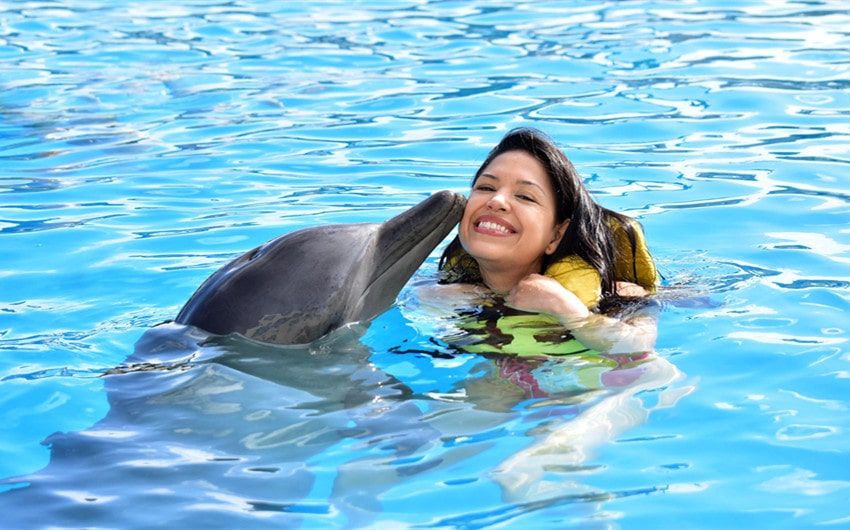Why Are Dolphins So Friendly? Understanding the Science Behind Their Playful Behavior
If you’ve ever watched dolphins leaping beside a boat or interacting gently with humans, you may have wondered, “Why are dolphins so friendly?” Their playful nature, social intelligence, and curiosity make them some of the most beloved animals on the planet. But their friendliness isn’t accidental — it’s rooted in biology, evolution, and complex social systems that shape how dolphins interact with their world.
In this complete article of more than 900 words, you’ll explore the real reasons behind dolphin friendliness, what scientists know about their behavior, and why these remarkable creatures connect so strongly with humans.
Dolphins Are Highly Intelligent Animals
One of the biggest reasons dolphins seem friendly is that they are among the most intelligent species on Earth. Their brains are large, complex, and capable of advanced problem-solving, communication, and emotional understanding.
Dolphins have:
- sophisticated memory
- the ability to learn patterns
- self-awareness
- instinctive curiosity
- strong emotional intelligence
Their high intelligence makes them more likely to explore their environment, including interacting with humans and other marine animals.
Dolphins also recognize themselves in mirrors, understand abstract concepts, and show empathy — traits linked to trust, playfulness, and social bonding.
Dolphins Live in Highly Social Groups
Dolphins don’t just live together — they thrive in complex “societies” known as pods. These pods can range from small families to large groups of hundreds.
Living in such tight social structures encourages behaviors like:
- cooperation
- teamwork
- communication
- shared play
- protection of the group
Because dolphins depend on each other for survival, they’ve evolved strong social instincts. Their friendliness toward humans is an extension of the same social behavior they use with each other.
In other words, dolphins are wired to bond — and humans simply become another part of their large social world.
Play Is a Key Part of Dolphin Life
Play is essential in dolphin culture. Dolphins play to:
- practice hunting skills
- strengthen relationships
- teach younger dolphins
- explore new things
- relieve stress
- express curiosity
They often:
- chase each other
- toss seaweed
- leap out of the water
- surf waves
- play with bubbles
- interact with boats
Because dolphins rely heavily on play to learn and grow, they naturally view humans as potential play partners. Their friendliness is partly a playful instinct — one that continues throughout their entire lives.
Communication Makes Them More Engaged with Others
Dolphins communicate using clicks, whistles, body movements, and even touch. Their communication is so advanced that scientists believe each dolphin has a unique “signature whistle” — similar to a personal name.
This sophisticated communication system helps dolphins:
- cooperate
- share information
- alert the pod to danger
- express emotions
- build relationships
When dolphins interact with humans, they sometimes whistle, click, or mimic sounds. This may be their way of trying to “talk” to us.
Their interest in communication contributes to the sense that dolphins are friendly, because they genuinely try to engage with the world around them.
Curiosity Drives Dolphin Behavior
Dolphins are naturally curious animals. They investigate objects, fish, boats, and even people swimming in the ocean. When they approach humans, they often circle around them or swim nearby, not because they are trained to — but because they are curious.
Curiosity is a sign of intelligence, and dolphins use it to:
- learn about unfamiliar creatures
- explore changes in their environment
- test how other beings react
Their curiosity makes them seem friendly, but it also shows how aware and observant they are of their surroundings.
Dolphins Rarely View Humans as Threats
Many predators or large marine animals avoid humans because they view us as dangerous or unfamiliar. Dolphins, on the other hand, typically do not see humans as a threat.
This lack of fear makes them:
- more willing to approach boats
- more comfortable swimming near swimmers
- more likely to interact during research or tourism activities
Their relaxed attitude around humans contributes to the perception that they are friendly — and in many cases, they truly are.
Dolphins Display Altruistic Behavior
There are countless reports of dolphins helping injured swimmers, guiding lost boats, or protecting humans from sharks. While not every dolphin behaves this way, many displays of altruistic behavior have been observed.
Examples include:
- supporting drowning individuals
- lifting injured animals to the surface
- protecting other species from predators
- guiding boats through dangerous waters
Scientists believe dolphins may do this because:
- they recognize distress
- they are naturally empathetic
- they practice similar rescue behaviors within their pods
This instinct to help makes dolphins seem incredibly friendly and compassionate.
Dolphins Show Emotional Bonds and Empathy
Dolphins experience a wide range of emotions, including joy, sadness, and empathy. They form long-term relationships within their pods and even seem to mourn loss.
Their emotional capacity explains many behaviors, such as:
- comforting injured dolphins
- playing gently with human children
- showing excitement during interactions
- protecting vulnerable animals
This ability to connect emotionally is rare in the animal world — and it makes dolphins particularly capable of forming warm relationships with humans.
Humans Are Fascinated by Dolphins, Increasing Interaction
Humans naturally love dolphins because they appear playful, intelligent, and graceful. Because of this fascination, humans seek interaction through:
- dolphin-watching tours
- research programs
- photography
- marine conservation
- swimming and snorkeling excursions
This frequent exposure creates more positive interactions, which further enhances the belief that dolphins are exceptionally friendly.
In environments where dolphins regularly encounter humans, they often become even more curious and interactive.
Evolution May Have Encouraged Their Friendliness
While many predators rely on aggression for survival, dolphins evolved differently. Their survival depends more on:
- social cooperation
- group defense
- shared parenting
- teamwork during hunting
This cooperative evolution fosters friendly, communicative behavior rather than territorial or solitary aggression.
Because dolphins evolved as social problem-solvers rather than solo hunters, their instincts lean toward bonding and communication — not confrontation.
The Myth vs. Reality: Are Dolphins Always Friendly?
While dolphins are often friendly, it’s important to remember they are still wild animals with complex emotions. They can become aggressive under stress or during mating season, and they sometimes display rough behavior with other marine animals.
So while dolphins often appear friendly, that doesn’t mean they are harmless in every situation. Respecting their space is crucial.
Final Thoughts
So, why are dolphins so friendly?
The answer lies in a beautiful combination of:
- high intelligence
- strong social structures
- natural curiosity
- advanced communication
- emotional depth
- evolutionary cooperation
- playful instincts
- low fear of humans
Their behavior is a reflection of their remarkable mental and emotional world — one that allows them to form unique connections with each other and with us.
Dolphins aren’t just friendly because they choose to be. They’re friendly because their biology, evolution, and social systems support a lifestyle of cooperation, curiosity, and communication.





